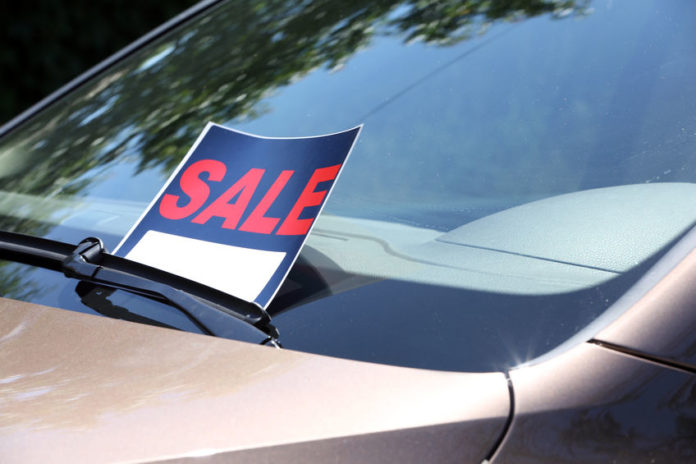
Understanding How to Embrace & Anticipate Changes in Your Market
By Desiree Homer
The variable cost to market is a key performance indicator that tends to vary for each dealership, according to the region and market fluctuation. You may find yourself scrutinizing your data routinely to look for unique ways to minimize costs and maximize revenue. We wanted to explore some of the critical components that contribute to a successful dealer’s variable cost to market numbers. It might help you to see the best practices of others who are anticipating trends to keep their costs down and numbers up.
Knowing What Customers Want to Buy
Recent trends are indicating that sedan purchases may be peaking nationwide. For a dealer to invest heavily in acquiring used sedans, it might not be as lucrative as loading up on SUVs and pickups instead. It’s about finding the relevant data and then anticipating what will work best in your market.
In my neck of the Midwest woods, there are notable trends that local dealerships leverage routinely. Being in a more remote area, for example, many of the residents within a 100-mile radius commute to the larger cities for work. This creates an increased need in our markets for fuel-efficient commuter vehicles. It also means these same consumers aren’t bothered by driving to St. Louis for car shopping any more than it bothers them to drive to work. In turn, the local dealers are aggressive with their advertising and vehicle acquisition platforms to find the fuel-efficient commuter and family cars. On the flip side, we’re also in farm country, so it’s critical for dealers here to have ample truck and SUV inventory for the thousands who live in the country or work their vehicles for a living.
Similarly, those dealerships in Colorado will funnel more capable, four-wheel-drive inventory conducive for mountainous driving. Florida dealerships may tend to cater to more of a retirement community with more luxurious needs, or vehicles with more top-down type of amenities for those residents enjoying the carefree beach lifestyle.
The key is recognizing who your buyers are in your markets, how they plan to need or use their vehicles, and know those needs may change and require your constant attention.
An Aggressive Vehicle Acquisition Platform
The most competitive and successful dealerships tend to have aggressive vehicle acquisition platforms in place. Obviously, the key to your success is managing this delicate balance between inventory and sales without overspending.
You recognize that how your dealership acquires new inventory today is vastly different from years ago. Having rows of shiny new cars is a necessity. However, you are well aware that your profits depend on the used inventory. According to recent NADA data, a new vehicle department accounts for roughly 58% of the dealer’s total sales, but less than 26% of its actual gross profit. The used car sales represent around 31% of a dealership’s total sales, but as you know, the profit margins are close to that of new cars – 25%. Factored into both percentages are also profits from F&I on those new and used vehicle sales.
Sourcing & Selling Platforms
How you source for inventory requires targeted strategies, and there are a host of tools available today to help you identify and buy the precise inventory your lot needs. Your process will include how often you buy, where wholesale vehicles are sourced, and guidelines for trade-ins and remarketing.
Auction companies are making it easier to view and bid on used inventory, as well as selling off wholesale units. For example, ACV Auctions recently announced technology enhancements to their platform that allows dealers to bid and buy remotely, and on their schedule.
Other buying platforms like LeadLocate.com help dealers identify ideal vehicles for sale by individuals with software designed to make it easy to connect with owners of precise models.
Review the Conditioning Process Ongoing
Another critical component of your variable cost to market is managing your expenses, including the conditioning of used inventory. Dealers have different timelines for conditioning turnaround, but the top dealerships are getting cars done in 24 hours or less. Some have lengthier timelines, up to seven days. The longer it takes to prepare your units for the lot can be costing you precious revenue. Based on the premise of ‘time is money,’ here are a few best practices we found that might help you reorganize how you manage your conditioning schedules.
Know each vehicle’s exit strategy: Involve your key staff members, including appraisers and decision-makers, daily, if possible, to review trade-ins and decisions about retail and wholesale market appeal. Acquiring vehicles at auction that don’t have that market appeal (e.g., market days supply) may prove to be aging units. Trade-ins can also be costly if they require too much reconditioning and should be wholesaled off instead.
Avoid buying problem vehicles: This might seem redundant, but some dealers will acquire vehicles with intentions of filling gaps on their lots, without first doing the proper vehicle vetting to avoid costly conditioning. Always be diligent in your vehicle selection process to check the condition reports, AutoCheck, or CARFAX histories.
Incentivizing the reconditioning process: Streamline your timelines for vehicle conditioning by incentivizing your service managers and teams. Consider dedicating a select number of technicians who focus on thorough and diligent reconditioning work. Avoid having to play tug-of-war with the service department, by outlining a strategy and then rewarding those team members for the quick turnaround.
Follow up with a process for “auto-approval:” Consider setting up a guideline cost for reconditioning. Many dealers suggest $600-$800 per vehicle is about average. Then, allow your service teams to make decisions about approving conditioning work that falls outside of those benchmarks, to avoid delays. Some dealers cite caution, worried their service departments might “stitch-up” the repair order to maximize the amount per vehicle. However, if executed properly, it can be a great strategy to avoid conditioning delays.
Always be looking for ways to save: Dealerships are revisiting their internal labor and parts costs to identify potential savings. Front-end profit margins can improve with decisions to charge less than retail rates for labor, maybe using non-OEM parts for brake pads and wiper blades, and streamlining the management of their outside vendors for dent repair, etc.
Managing Aged Inventory Ongoing
You may have an aggressive vehicle acquisition platform, but every dealership will have to deal with an aging inventory. Managing your aged units for profit can play a significant role in your success. One best practice, on average, is to hold 50% of the aged vehicles for a maximum of 30 days, post-acquisition. Beyond the 45-day mark, unsold cars should be wholesaled. Waiting too long can mean greater losses and depreciation management a tougher prospect. Setting and sticking to a pinpoint schedule can help you keep that depreciation under control and incentivize the managers to move those vehicles before their wholesale-out dates.
Selling those vehicles within their designated aging timeline means designing a marketing plan for those units. Used cars have stories, and you know stories engage buyers. Consider building a strategy that includes telling a story online and in-person, with unique details and value propositions. Imagine you’re breathing life into an old car. You may also need to invest in or consider upgrading an existing inventory management software. You can have data at your fingertips about how many times a vehicle goes on a test drive or how many deals have been written to help you make the savviest decisions.
Smart Pricing Sells Cars
How you price your used inventory will determine whether or not those vehicles sell successfully, or reach those aged unit timelines for wholesale. Many dealers try to price their vehicles based on the top three value rankings, against competitor settings. Ideally, this process matches the current consumer buying process. A car buyer will typically research online first, across classified and dealerships sites, to then narrow down their top three selections. Pricing, according to this data, does work well for some but does present a few pitfalls. It’s tough to review the competitive sets continuously. Managers and owners are busy and often wear many hats. Pricing can be one of those aspects of operation that is decided quickly, on aging, or without in-depth data consideration. Understanding your price to market points, as they relate to the top three competitive sets, can help you keep your pricing in line with buyers’ expectations.
Analysis and Data Management
Dealerships that perform routine analysis of not only inventory but also aging and precise buying habits within the local markets tend to sell more. These analysis processes can be streamlined to increase results, as well. How you gather new data and implement changes and best practices should be ongoing. You can identify turn cycles, fine-tune your sourcing efforts, and price competitively with the use of digital platforms and dealership management systems (DMS). The tools your dealership leverage can play a significant role in can be a determining factor in maximizing revenue. You may already be using a DMS, but consider tech and software efficient upgrades. Collaborate with your managers and key team members to determine how to apply those data points to existing processes. Along with past and present sales performance, you can implement changes and keep your finger on the pulse of your market trends.
How your dealership anticipates trends and manages the variable cost to market efforts is key to operational success. Because these variables will be different in each regional market ongoing, there isn’t a set-in-stone magic wand to get there. These and other best practices are the most prominent dealerships are embracing, and the ones that your dealership can tap into as well.












